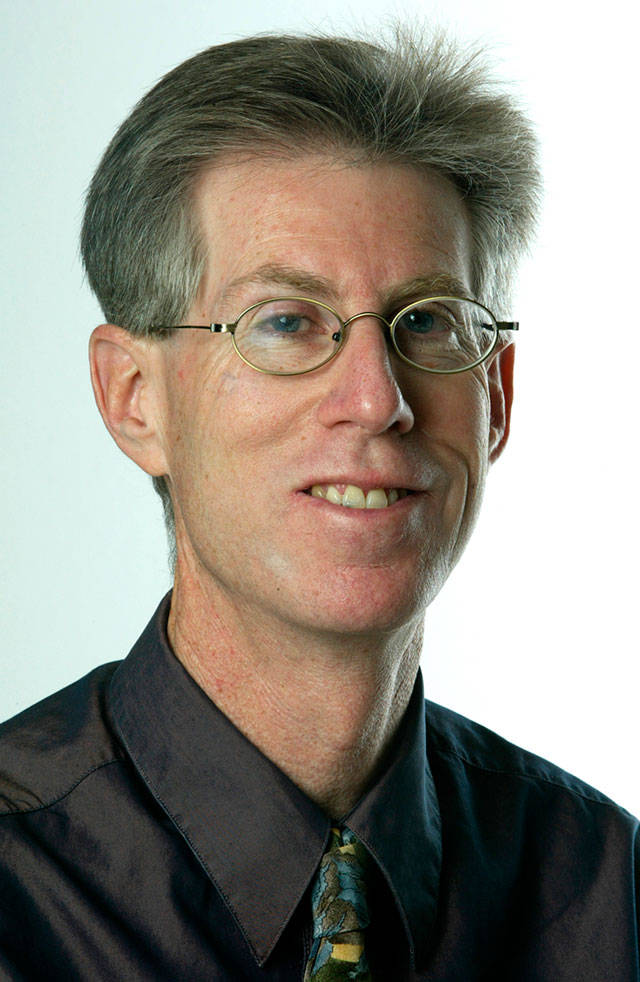In 2015, after another session without procuring a key weapon in his climate change fighting strategy, Democratic Gov. Jay Inslee decided to get it done on his own.
He had pledged to combat a looming environmental cataclysm and was tired of lawmakers thwarting attempts to engage in the battle in a meaningful way.
Tapping into his executive powers, Inslee directed the state Department of Ecology to design a means of capping and, over time, reducing emissions of pollution-abetting carbon.
A sweeping rewrite of the state’s clean air rules emerged, and a legal challenge from a few of those in the crosshairs of the new regulations ensued. In December 2017 a Thurston County judge found the gubernator’s decree went too far and blocked the rule from taking effect.
On March 19, the content of the rule and the breadth of Inslee’s executive authority will be considered by the state Supreme Court.
Ironically, such flexing of executive muscle on behalf of one’s political agenda is what we’ve come to expect from President Donald Trump, the man whose job Inslee is seeking. It’s been Trump’s go-to exercise when stymied by Congress from keeping his political promises.
Trump has pretty much lost every courtroom encounter. It’ll be a few months before the fate of Inslee’s endeavor is known.
The rule crafted by the governor’s ecology agency set emission standards for both stationary sources of pollutants and purveyors of fossil fuels that emit greenhouse gases when burned.
It targeted the state’s largest emitters such as natural gas distributors, petroleum product producers and importers, power plants, metal manufacturers and landfill operators. Large manufacturing operations, such as the Boeing Co. plant in Everett, also made the list of those expected to be affected at some point.
Inslee wanted to require each of the 68 outfits on the list to reduce carbon emissions by an average of 1.7 percent annually. Initially, the rule would apply to those that release at least 100,000 metric tons of carbon a year. Every three years the threshold would drop and as a result more companies would be subject to the requirements.
In the legal challenge, natural gas providers argue the rule should not apply to them as they do not generate emissions which they can reduce. The Association of Washington Business contends the approach is a flat-out overreach from the executive branch.
AWB lawyers argue in their brief that Inslee had become “fed up” with the Legislature when it didn’t act in 2015 and ordered the agency to come up with the rule.
“As Ecology conceded in an internal memorandum: ‘Alternatives were not considered because the Department of Ecology was directed by Governor Inslee to develop and adopt a rule,’” they wrote.
State attorneys counter the department has “broad authority” to set emission standards and the rule “should be upheld in its entirety.”
But each provision can be dealt with separately, they contend. If one is found invalid, the rest “can remain in place and perform the important task of reducing Washington State’s greenhouse gas emissions,” they wrote.
The Supreme Court hearing comes as Democratic lawmakers are on course to enact several bills — such as a low-carbon fuel standard and providing electricity from non fossil fuel sources — which are projected to reduce carbon emissions on a par with what the Clean Air Rule originally sought to accomplish.
Inslee still wants the rule. If restored by the court, it would further embolden the governor and presidential candidate on his self-proclaimed mission to save the world for future generations from the devastation of climate change.
“I filed an executive order that I believe is totally within my executive authority to do,” Inslee told a crowd of mostly students at a University of Washington forum earlier this month. “ There’s some dispute about that and the Supreme Court is going to decide. I hope they decide it in favor of all of our grandchildren.”
Jerry Cornfield: 360-352-8623; jcornfield@herald net.com. Twitter: @dospueblos.


